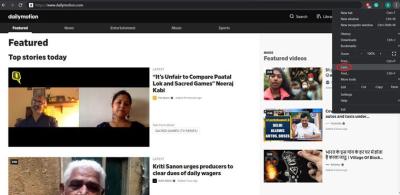- Diverse Collection: Estockphoto boasts a vast and diverse collection of visuals, covering topics from nature and travel to business and technology. This diversity ensures that you can find the perfect image to complement your content.
- Licensing Options: Estockphoto offers various licensing options, including royalty-free and extended licenses, giving you flexibility in how you can use their images.
- Quality Assurance: The platform is known for its commitment to quality, with images that are meticulously curated and maintained to meet high standards.
- User-Friendly Interface: Estockphoto's website is user-friendly, making it easy to search for and download the images you need.
2. How to Choose the Right Images
![SEO Ranking Factors [Infographic]](https://hdstockimages.com/wp-content/plugins/BlogPostBaba/images/2023/11/04/6546c756453b2.jpg) Choosing the right images from Estockphoto is a critical step in improving your website's SEO. The images you select should not only be visually appealing but also highly relevant to your content. Here's a comprehensive guide on how to make the right choices:
Choosing the right images from Estockphoto is a critical step in improving your website's SEO. The images you select should not only be visually appealing but also highly relevant to your content. Here's a comprehensive guide on how to make the right choices:1. Relevance Is Key
When searching for images on Estockphoto, always prioritize relevance. The chosen images should align with the topic and message of your content. Relevance is a primary factor that search engines like Google consider when ranking web pages. It helps ensure that your content is valuable and informative to your audience.2. Image Quality Matters
High-quality images are a must for any website. Crisp, clear, and well-composed visuals not only enhance the user experience but also reflect positively on your content's quality. Low-resolution or pixelated images can deter visitors and harm your SEO efforts. Use the following criteria to assess image quality:| Criteria | Description |
| Resolution | Images should have a high resolution to ensure clarity and detail. |
| Composition | Well-composed images with balanced elements are visually appealing. |
| Color Accuracy | Colors should be accurate and not distorted. |
| Originality | Choose images that stand out and haven't been overused across the web. |
3. Licensing and Usage Rights
Understanding the licensing options provided by Estockphoto is crucial. The two main licensing types are royalty-free and extended licenses. Make sure you comply with the terms of the license you choose. Additionally, if you plan to use images for commercial purposes, opt for extended licenses to avoid legal complications.4. Image Format and File Size
Optimize your selected images for web use. Choose appropriate file formats like JPEG or PNG, and ensure that the file size is not excessively large, as this can impact your website's loading speed. Compressed images can improve user experience and SEO rankings.5. Alt Text for SEO
Don't forget to add descriptive alt text to your images. Alt text provides text-based descriptions of images and is crucial for accessibility and SEO. Search engines use alt text to understand the content and context of images. Be concise and descriptive when writing alt text for each image.By following these guidelines, you can ensure that the images you select from Estockphoto enhance the overall user experience and positively contribute to your website's SEO efforts.Also Read This: How to Change Geo-Tag Info for Getty Images
3. Image Optimization for SEO
Optimizing images from Estockphoto is a key element of improving your website's SEO performance. Effective image optimization not only enhances your site's loading speed but also ensures that search engines can index and rank your content appropriately. Let's dive into the details of image optimization for SEO:1. Choosing the Right File Format
The choice of file format matters in image optimization. Two common formats for web use are:- JPEG (Joint Photographic Experts Group): Ideal for photographs and images with complex color gradients. It offers good compression and maintains image quality.
- PNG (Portable Network Graphics): Suitable for images with transparency and sharp edges. Provides lossless compression but may result in larger file sizes.
2. Image Compression
Image compression is essential for faster loading times and better user experience. You can use various online tools or image editing software to compress images before uploading them to your website. Balancing compression with image quality is crucial, as excessive compression can lead to loss of detail.3. Alt Text for SEO
Every image should have descriptive alt text. Alt text, or alternative text, is a brief, text-based description of the image. It is essential for SEO as search engines rely on alt text to understand the content and context of images. When writing alt text, be concise and descriptive, and include relevant keywords when possible.4. Image Size and Dimensions
Resizing images to the dimensions required by your website can significantly impact page load times. Avoid using large images when smaller ones would suffice. Use CSS to adjust image dimensions as needed for your layout. Smaller images load faster and improve the overall user experience.5. Image Sitemaps
Include images in your website's XML sitemap. This helps search engines discover and index your images, increasing their visibility in image search results. Ensure that each image is associated with a unique and descriptive filename for better indexing.6. Schema Markup
Consider implementing schema markup for your images. This structured data markup provides search engines with additional context about your images. It can result in rich image snippets in search engine results pages, enhancing the visibility of your content.Effective image optimization, as outlined above, not only improves your website's SEO but also contributes to a smoother and more engaging user experience. By ensuring that your images are correctly formatted, compressed, and described, you can maximize the benefits of using Estockphoto for your SEO strategy.Also Read This: Download Sound from SoundCloud with This Powerful Method
4. Using Estockphoto for Blog Posts
Estockphoto can be a valuable asset for enhancing your blog posts and making them more engaging, informative, and visually appealing. Here's a comprehensive guide on how to effectively use Estockphoto images in your blog content:1. Enhancing Visual Appeal
One of the primary reasons to use Estockphoto images in your blog posts is to enhance the visual appeal of your content. Engaging visuals not only break up the text but also capture the reader's attention. Consider the following tips:- Variety: Use a variety of images, such as photographs, illustrations, and infographics, to keep your blog visually interesting.
- Relevance: Ensure that the chosen images relate to the topic or message of your blog post. They should complement your written content.
- Placement: Integrate images strategically throughout your post to break up long paragraphs and create visual interest. For example, use images to illustrate key points, steps, or concepts.
2. Captions and Descriptions
Each image in your blog post should have a relevant and descriptive caption or description. Captions not only provide context to the image but also act as additional content that can be indexed by search engines. Use captions to reinforce the main points of your blog post.3. Consistency in Style
Maintain consistency in the style and tone of the images you use. This helps in creating a cohesive and professional look for your blog. If you're using custom filters or effects, apply them consistently to maintain a uniform visual theme throughout your blog posts.4. Optimized File Size
Ensure that the file size of the images you use is optimized for web use. Large images can slow down your blog's loading speed, affecting user experience and SEO. Compress images to strike a balance between quality and load times.5. Responsive Design
If your blog utilizes responsive design, make sure that the images from Estockphoto are appropriately scaled for different screen sizes and devices. This ensures that your blog remains user-friendly on desktops, tablets, and mobile devices.6. SEO-Friendly Filenames
Give your image files SEO-friendly filenames that reflect the content of the image and include relevant keywords. Descriptive filenames help search engines understand the image and its context in your blog post.7. Image Attribution
If you're using images with specific attribution requirements, make sure to provide proper attribution as per the licensing terms. Failure to do so can lead to legal issues and damage your blog's reputation.By following these guidelines, you can make the most of Estockphoto's rich visual resources to create compelling and SEO-friendly blog posts. Remember that a well-optimized and visually appealing blog can attract more readers, boost engagement, and improve your site's search engine rankings.Also Read This: Protecting Your Images Online
5. Estockphoto for Website Design
Estokphoto isn't just about enhancing individual blog posts or articles; it can also play a pivotal role in elevating the overall design and user experience of your website. When used strategically, Estockphoto images can transform your website into an engaging and visually appealing platform. Here's how to make the most of Estockphoto for website design:1. Hero Images
Consider using high-impact hero images on your website's landing pages. These large, attention-grabbing images can instantly convey your site's message or purpose. Choose hero images that are not only visually stunning but also relevant to your website's content or theme. A compelling hero image can captivate visitors and encourage them to explore further.2. Background Images
Background images can be used to set the tone and atmosphere of your website. Whether you're creating a personal blog, an e-commerce site, or a professional portfolio, selecting the right background images can enhance the overall look and feel of your web pages. Make sure background images don't overwhelm the content and maintain a balance between aesthetics and readability.3. Icons and Illustrations
Icons and illustrations from Estockphoto can add a touch of personality to your website's design. Whether you need custom icons for your navigation menu or whimsical illustrations to accompany your content, Estockphoto's diverse collection has you covered. Ensure that the style of icons and illustrations aligns with your overall design theme.4. Image Galleries and Sliders
Create visually appealing image galleries and sliders using Estockphoto images. These can be used for showcasing products, projects, or your portfolio. Image galleries can be interactive and engaging, providing visitors with a dynamic visual experience. Opt for responsive and user-friendly gallery plugins or scripts for the best results.5. Infographics
Infographics are a powerful way to convey complex information in a visually appealing format. Estockphoto offers a wide range of visuals that can be used to create informative and engaging infographics. Whether you're explaining data, statistics, or step-by-step processes, infographics can make your content more digestible and shareable.6. Cohesive Design
Maintain a cohesive design by using Estockphoto images that adhere to a consistent style, color scheme, and tone. A unified design creates a professional and polished look for your website. Ensure that images don't clash with your site's branding and theme.7. Mobile-Friendly Considerations
Given the prevalence of mobile browsing, it's essential to ensure that your Estockphoto images are responsive and display well on various devices and screen sizes. Test your website's design on different devices to guarantee a seamless user experience.By integrating Estockphoto images into your website's design, you can enhance its aesthetics, engage your audience, and create a visually appealing and user-friendly online platform. Remember that effective website design not only captures attention but also keeps visitors engaged, ultimately contributing to improved SEO rankings and user satisfaction.Also Read This: Making a Custom Ringtone From a YouTube Video
6. Tracking SEO Improvements
After incorporating Estockphoto images into your website and blog posts, it's crucial to measure the impact of your efforts on your site's search engine optimization. Accurate tracking allows you to assess the effectiveness of your SEO strategies and make data-driven decisions. Here's how to track SEO improvements:1. Google Analytics
Google Analytics is an essential tool for tracking website performance. It provides valuable data on traffic, user behavior, and conversions. Set up Google Analytics to monitor changes in traffic and user engagement after incorporating Estockphoto images. Look for increases in page views, time on page, and reduced bounce rates, which are all positive indicators of improved SEO.2. Keyword Rankings
Track the rankings of the keywords relevant to your content. Tools like Google Search Console or third-party SEO platforms can help you monitor your keyword positions in search engine results pages (SERPs). If you notice improvements in your keyword rankings, it's a sign that your SEO efforts, including the use of Estockphoto images, are having a positive impact.3. Image Search Traffic
Examine your website's image search traffic. Google Image Search can be a significant source of organic traffic. Check whether the implementation of Estockphoto images has led to an increase in image search traffic. This is a direct indicator of how well your images are optimized and how effectively they attract users.4. Backlink Monitoring
Keep an eye on your website's backlinks, as they are a critical factor in SEO. Tools like Ahrefs or Moz can help you track backlinks and their quality. High-quality backlinks can positively influence your site's authority and rankings. If you observe an increase in backlinks after incorporating Estockphoto images, it's a sign of improved SEO value.5. Website Loading Speed
Monitor your website's loading speed with tools like Google PageSpeed Insights. Images, especially those from stock photo websites, can impact loading times. Ensure that the use of Estockphoto images doesn't significantly slow down your site, as this can affect user experience and SEO rankings.6. User Engagement Metrics
Track user engagement metrics, such as click-through rates (CTR) on search engine results pages and on-site user interaction. Improved CTR and increased user engagement with your content are positive signs of SEO progress. These metrics reflect how your content, including Estockphoto visuals, resonates with your audience.7. A/B Testing
Conduct A/B testing to assess the performance of pages with and without Estockphoto images. Compare user behavior, bounce rates, and other relevant metrics to determine the impact of including visuals on your website's SEO. This data can guide further improvements and optimizations.Remember that tracking SEO improvements is an ongoing process. Regularly analyze the data and make adjustments based on your findings. By monitoring these key factors, you can gain valuable insights into how Estockphoto images are contributing to the enhancement of your website's SEO performance.eStockPhoto Downloader is a user-friendly online tool that allows you to access a vast collection of high-quality stock images effortlessly. https://t.co/mQGYNeY9Zy . . . . . . .#eStockPhoto #StockImages #Photography #Illustrations #Graphics #DesignResources #ContentCreation
— Fiverr gig Promotion (@Fiverr_gig_pro) July 27, 2023
Also Read This: How to Make a Composite Image Using Photoshop or GIMP
7. FAQ
Here are some frequently asked questions about using Estockphoto for SEO and website enhancement:- What is Estockphoto? Estokphoto is a prominent stock photo platform offering a vast collection of images, illustrations, and multimedia content for various creative and business purposes. It's a valuable resource for website owners, digital marketers, content creators, and designers.
- How can Estockphoto improve SEO? Estockphoto can improve SEO by providing high-quality, relevant images that enhance user experience, reduce bounce rates, and increase engagement. When used correctly, these factors can positively impact search engine rankings.
- What types of images can I find on Estockphoto? Estockphoto offers a diverse range of images, including photographs, illustrations, vectors, infographics, and more. The collection covers a wide variety of topics, ensuring that you can find images relevant to your content.
- How do I choose the right images for my content? Choosing the right images involves considering relevance, image quality, licensing options, and file format. Ensure that the images align with your content's message and are visually appealing.
- What is alt text, and why is it important for SEO? Alt text is a descriptive text that is added to images for accessibility and SEO purposes. It provides context to search engines and users about the content of the image. Using alt text is crucial for SEO as it helps search engines understand the image's relevance to the content.
- Can I use Estockphoto images for commercial purposes? Yes, you can use Estockphoto images for commercial purposes, but it depends on the licensing options you choose. Ensure that you comply with the terms and conditions of the selected license to avoid legal issues.
- How can I track the impact of Estockphoto on my website's SEO? You can track the impact of Estockphoto by using tools like Google Analytics to monitor traffic and user engagement. Additionally, keep an eye on keyword rankings, image search traffic, backlinks, and user engagement metrics to assess improvements.
- Are there any best practices for using Estockphoto images in website design? Best practices include selecting impactful hero images, using consistent styles, optimizing images for various screen sizes, and ensuring images don't affect your website's loading speed negatively.

 admin
admin








